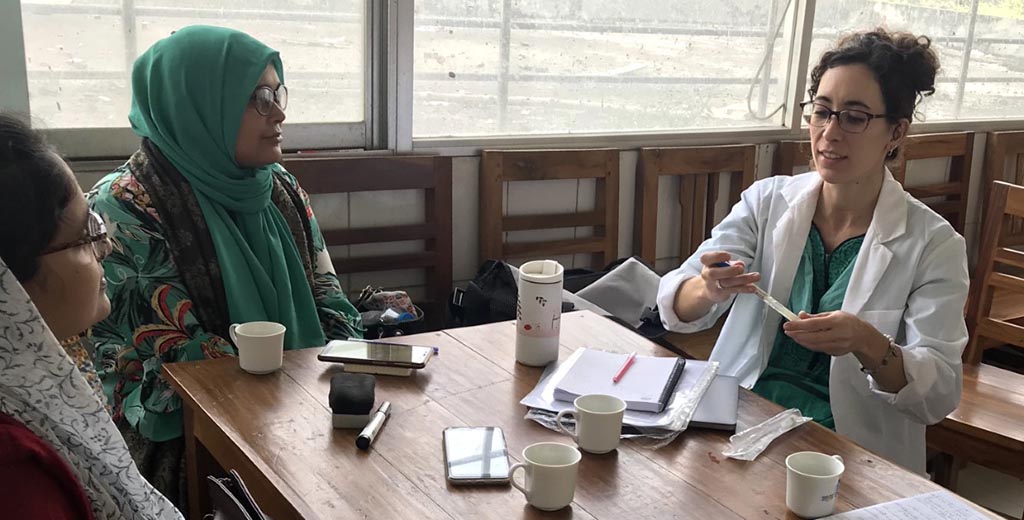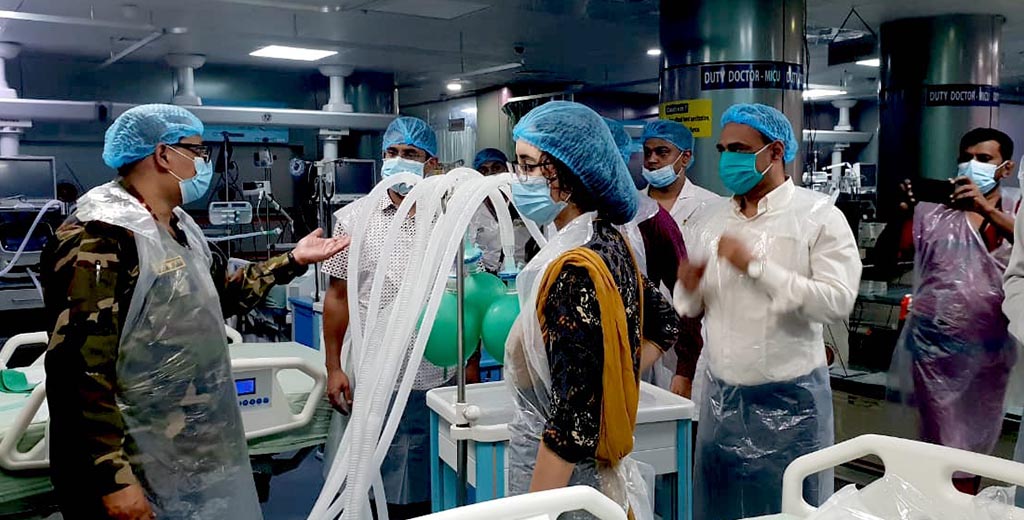While studying antimicrobial resistance in newborns in hospitals in Bangladesh, Stanford postdoctoral student Ashley Styczynski, MD, learned that the country has an alarming number of stillbirths, putting it in the top 10 countries in the world with the most cases.
The discovery set her on a quest to discover the underlying reasons for the high incidents of stillbirths and to find ways to prevent it. As this year's winner of the Rosenkranz Prize, Styczynski looks forward to continuing her research in the country where she began work as a 2019-2020 Fogart Fellow almost 10 months ago.
For now, however, Styczynski, an infectious disease physician, is fighting another deadly health concern: the spread of COVID-19 infections.
On the mid-April day Styczynski heard she had won the Rosenkranz prize, she was already working with a team from the U.S. Centers for Disease Control and Prevention to train staff at one of the rural hospitals in Bangladesh on COVID-19 prevention strategies and medical triage. Styczynski is also working with the infection prevention and control team of the International Centre for Diarrhoeal Disease Research, Bangladesh.
"This is what I signed up for as a Fogarty fellow, to help build local capacity," she told me, speaking from her flat in Dhaka, the world's third-most populated city. "I am also an infectious disease specialist, and these are the types of situations we run towards rather than away from. We build our career for moments like these."
As of May 14, there were 18,863 cases in Bangladesh and 283 deaths, according to the Johns Hopkins Coronavirus Map.
Styczynski said the country is facing challenges similar to those in most countries, including a slow start on testing, stigma about testing positive and fear of contracting the infection by seeking treatment at hospitals. Like other nations, Bangladesh is also experiencing ancillary problems, such as widespread job losses -- especially among low-wage workers -- and the splintering of families and communities.
"Many people here in Dhaka live in high-density apartments with six to 12 people living in the same room," she said. "How do you isolate when you have a one-room home?"
As part of the CDC team, Styczynski has visited district hospitals to assess gaps in preparedness and report those to the Ministry of Health so they can provide support. The visits also have provided contextual data that Styczynski has sent back to Stanford Medicine colleagues who are working to address the lack of personal protective equipment in low-resourced countries.
"We hope we can generate some evidence very quickly so we can share some of this information to better protect health-care workers in other low-resource countries," she said.

Though it's unknown when Styczynski will be able to return to her research on stillbirth causes, she's confident can pick up where she left off.
Bangladesh has an average of 25.4 stillbirths per 1,000 births. Most of the stillbirths around the world occur among women who live in low- and middle-income countries, with some 2.5 million women suffering the heartbreaking loss each year.
Styczynski believes intrauterine infections might be an underrecognized factor contributing to the excess stillbirths in Bangladesh. She intends to perform metagenomic sequencing on placental tissues of stillborn babies, a process that will allow her to examine the genes in the organisms of those tissues and evaluate the pathogen diversity.
"By applying advanced technologies and software platforms, this research will not only enhance our understanding of causes of stillbirths in Bangladesh, but it may also provide insights into causes of early neonatal deaths," Styczynski said.
Images, including top photo of Ashley Styczynski evaluating ventilation equipment in a hospital in Bangladesh, are courtesy of Styczynski.






